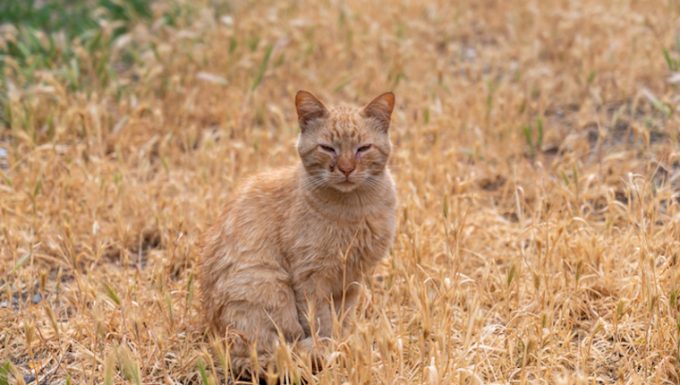Your outdoor cat probably loves to roam around outside. But did you know that foxtails can be harmful to your cat? This is especially so during the summer and fall months.
If you were wondering, foxtails are a type of plant that contain barbed seed heads. Subsequently, foxtails can end up burrowing into your cat’s skin. Sometimes, foxtails can become fatal for a cat.
In general, you might have heard people call foxtails by the name mean seeds. You can recognize them by their fuzzy seed heads.
While indoor cats should be safe from the dangers of foxtails, they are a big risk for outdoor cats.
Here is what you need to know about foxtails and your kitty.
Why Are Foxtails Bad For Cats?
Foxtails are harmful for cats. This is because the plant contains a barbed section. Unfortunately, these barbed parts can burrow into a cat and keep moving through their body.
For example, an outdoor cat might pick up dangerous parts of the foxtail plant via their paws, mouth, nose or ears. In fact, if a cat inhales parts of the foxtail plant, it can even result in a case of pneumonia.
Once a foxtail has attached to a cat, its barbed shape means it keeps burrowing deeper into the body. Some foxtails can even make their way to a feline’s lungs or brain.
Additionally, foxtails can spread bacteria through the body.
In general, some of the common symptoms that foxtails might produce are:
- Shaking the head a lot
- Squinting all the time
- Scratching the head a lot
- Limping
- Discharge from the nose
- Sneezing a lot
Tips To Keep Your Cat Safe From Foxtails

Foxtails can be very harmful for an outdoor cat. Thankfully, you can also take some steps to keep your kitty safe.
Some of the ways to protect your cat from foxtails include:
- Examine your cat’s toes. Look for signs of foxtail seeds.
- Take a look inside your cat’s ears. Again, look out for signs of foxtail seeds.
- Stay cautious during the period from June to October, when foxtails are most common.
- Pay attention to any symptoms. Keep an eye out for any red areas where a seed has started to burrow into the body.
- Cut down any foxtail plants or grass in your garden or outdoor space.
- Additionally, if you notice a foxtail seed lodged into your cat’s body, go to see your vet. You will need to have the seed removed by a professional.
In general, foxtails are another reason why you should really consider keeping your cat indoors. This is for their own safety and wellbeing.
Have you seen any foxtails recently? How do you keep your cat away from foxtails? Let us know in the comments below!









